Shamanism is an important part of the culture of many nations. Some of those cultures still exist, but due to lack of information, modern people can hardly imagine what shamans do. In most cases, they picture a grotesque figure of a man wearing feathers and beating a tambourine to cause rain.
To get more information on that, we’ve decided to interview an individual who experienced shamanistic practices and could tell us how they work.
Contents
- How did you decide to go to Peru to undergo ayahuasca ceremonies?
- Weren’t you afraid to go to such an unknown territory? Did you somehow prepare yourself or gain special knowledge on the topic at that time?
- Did your team have any common reasons, or did each person have their grounds?
- Where is it possible to go through such a ceremony?
- So that was the reason why you chose Peru for your trip? What was your purpose for going through the ritual?
- Please tell us about the modern shamans. How should people take them, and what is their role?
- More about ayahuasca ceremonies
- What is ayahuasca, and how is it used? How does it work? Is it true that it causes hallucinations? How dangerous can it be for health?
- How long the retreat last? What procedures did you undergo? Where did you live? How many other participants were staying with you?
- Did you manage to achieve the desired result?
- Does this kind of Medicine have many opponents? Why are many people prejudiced against it?
How did you decide to go to Peru to undergo ayahuasca ceremonies?
Going to Peru was not a spontaneous decision. In the winter of 2011, I traveled to the depth of the Karelian taiga along with another four people. Severe frosts and snow did not stop us. Led by power, we were looking for new knowledge. Our goal in this winter expedition through the Karelian forests was reaching Mount Vottovaara, which is believed to be one of the most mysterious places in Russia. New knowledge, discoveries, ideas, and inspirations are believed to come to a person managing to reach it. Each traveler gets something unique. There, we realized that we should travel to the Amazon Rainforest to meet Peruvian shamans, who have been working with ayahuasca and spirits of local plants for thousands of years.
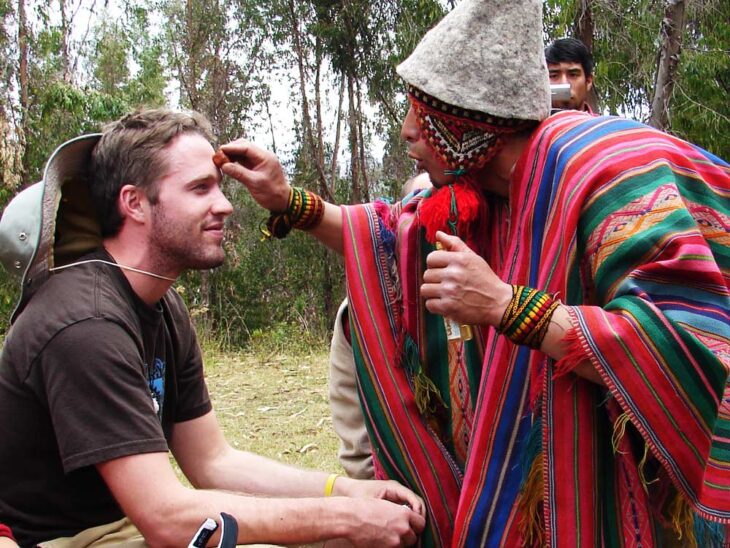
Source: Peru Agency
Weren’t you afraid to go to such an unknown territory? Did you somehow prepare yourself or gain special knowledge on the topic at that time?
It took us around a year to prepare for our trip. We collected lots of information about the area that we were going to visit, about shamans and places where ayahuasca ceremonies were conducted. At that time, ayahuasca was not as popular as it is now, and there was far less information on that on the Internet. We carefully planned our route and all the trip’s details. A year later, our group was sitting in the seats of a snow-white airliner, traveling towards the unknown.
Did your team have any common reasons, or did each person have their grounds?
It is important to understand that the decision to go to Peru to shamans for an ayahuasca ceremony is a personal decision of each individual. Each traveler has his own reasons and aims to go on such a trip. I went on this journey because of the things happening to me at that time. Other people had their own reasons. People may be looking for an opportunity to change themselves or change their lives, or they want to find a cure for their disease when other methods of treatment do not work. More about this ceremony, you can find it at dmt.vision.
Anyway, in my opinion, there is one main and a common reason for almost everyone who goes on such a journey – trying to change something in their life, learn something new, experience the ancient mystical tradition, which has been nearly lost in the modern western world.
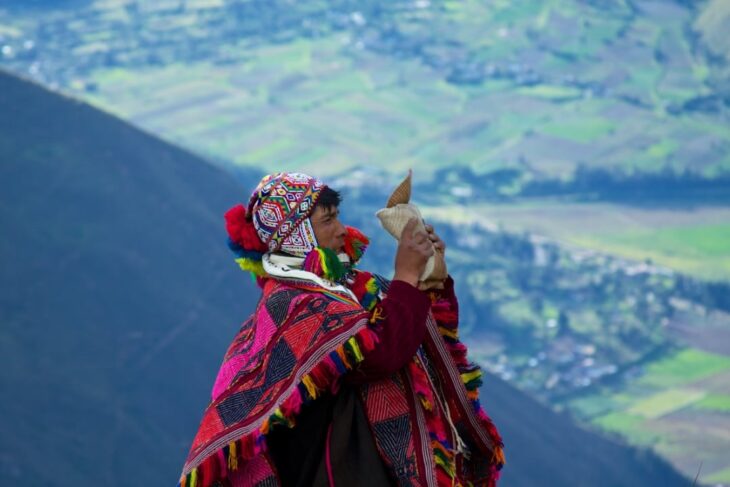
Source: One Spirit Medicine
Where is it possible to go through such a ceremony?
There are several options for a person who wants to undergo an ayahuasca ceremony. One can travel to Peru, Brazil, or Ecuador, as well as go for quick retreats in European countries where such rituals are legal. Trips to Brazil and Ecuador are not so popular.
It may be difficult for a beginner to choose a center in his own country. Unlike in Peru, there may be just a few of them, and it may be challenging to find information on them. Short retreats in Europe are conducted for those who are not ready to fly to a different continent and want to undergo the ceremony close to home in more comfortable conditions. However, this option does not allow enjoying an authentic experience of the Amazonian healing traditions. They are carried out by shamans who arrive in Europe for some time to conduct such short retreats. These ayahuasca ceremonies are hosted in rented houses, far away from the original culture and the land on which indigenous peoples for thousands of years have held such retreats. This option is the quickest and the most convenient but less preferable in terms of the quality of experience and opportunity to achieve personal goals and solve problems. When it comes to going through your first ayahuasca ceremonies and gaining authentic experience, it is better to travel to Peru if you have enough time and money.
So that was the reason why you chose Peru for your trip? What was your purpose for going through the ritual?
As I said, we got the idea of going to the Amazon Rainforest on the shamanic trip. The shamans called us to share their wisdom and power. It is difficult to explain how exactly that happened, but we felt that we should go to Peru.
My interest in shamanism arose long before going to Peru. Since I was four years old, I’ve seen and realized a bit more than most people could see. In shamanism, it is called “to see with the heart.” I had to live and cope with this gift all alone. But over time, I realized that I needed someone who would guide me and help control this perception of the world. And then, my first teacher came to me. He was the one who took other participants and me in Peru. In a center where I first tried ayahuasca, I began learning about Peruvian shamanism and the healing techniques of indigenous people of Amazonia. I did not choose anything myself but just trusted my intuition.
When people ask me how to choose a center to go to, I always tell them that they should listen to their hearts. This is exactly what happened to us in 2012 when we, following the teacher, traveled to Peruvian Amazonia.
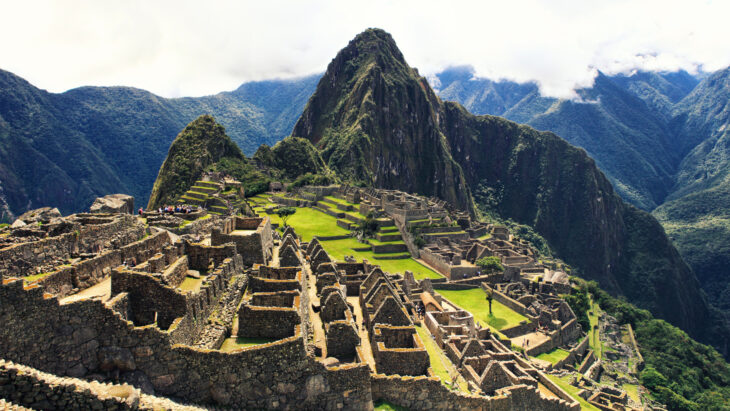
Source: andBeyond
Please tell us about the modern shamans. How should people take them, and what is their role?
The first thing that a person who wants to try ayahuasca or learn something from a shaman should understand is that shamans are ordinary people. Lots of people are prone to idealize everything related to shamanism. I’ve seen lots of those looking for gurus or saints. I might disappoint you, but you won’t find them there, at least I haven’t personally met those.
A good shaman is a professional in the world of spirits, energy, and plants. Such a shaman can determine the cause of a person’s problems, can help them find out what causes their illness, and understand what they can do to be healed and achieve the desired goal. Many people who come to Peru do not know that a shaman cannot complete the work that they need to do to change their life and cure their diseases.
Here, people often realize apparent things, such as the need to change their lifestyle or get rid of bad habits. After such trips, people find the strength to change things revealed to them during the ceremonies with the Amazon brew.
I lived in different centers, learned from the shamans in Peru, Brazil, and Ecuador. Most of the local shamans do not willingly share their knowledge. Training and communication with people who came to Peru for local shamanistic practices are very different from what is expected by people when getting prepared for the trip and watching videos on the Internet about Peruvian shamanism. The methods used by the local shamans when dealing with foreigners are often similar to those described in Castaneda’s books, which can cause shock or irritation.
During such a journey, it is essential to show respect for local traditions – try to refrain from evaluating things happening there from your point of view, but observe the work of a shaman and follow his recommendations.
Shamans in safe and trusted ayahuasca centers closely monitor each participant during the ceremony. You can talk to them during the day with the help of an interpreter, unless, of course, you speak Spanish.
It is essential to focus on the purpose that made you come to Peru, to follow the shaman’s recommendations and the rules of the center where you stay, and to focus on your experience and your inner processes as much as possible. If someone worries about something, the person can always tell the shaman about the problem, and he will take into account the current person’s state and will keep it in mind when working with the one.
More about ayahuasca ceremonies
Ayahuasca ceremonies are held in a special place, which looks like a tent and is called maloka. It can have either a round shape or the shape of a pyramid. The ayahuasca ceremonies are held only at night. In the evening, right before the ceremony, participants gather together in maloka and wait for a shaman who is going to lead the ceremony to begin pouring out ayahuasca.
Each participant in the ceremony approaches the shaman and drinks a portion of ayahuasca. After that, the person lies back on his mattress. The lights in maloka are turned off, and all the participants of the ceremony start waiting for an effect. Usually, the effect is observed in an hour. After that, the shaman, who is called curandero in Peru, begins to sing individual songs called Ikaros.
Usually, they sing Ikaros in the Shipibo language. With the help of these songs, shamans work with the people who came to the ceremony, and it is the most important part of the ritual. After a few hours, when the effects of ayahuasca disappear, the participants go to their houses so that they wouldn’t bother each other and could relax and think through the experience gained.
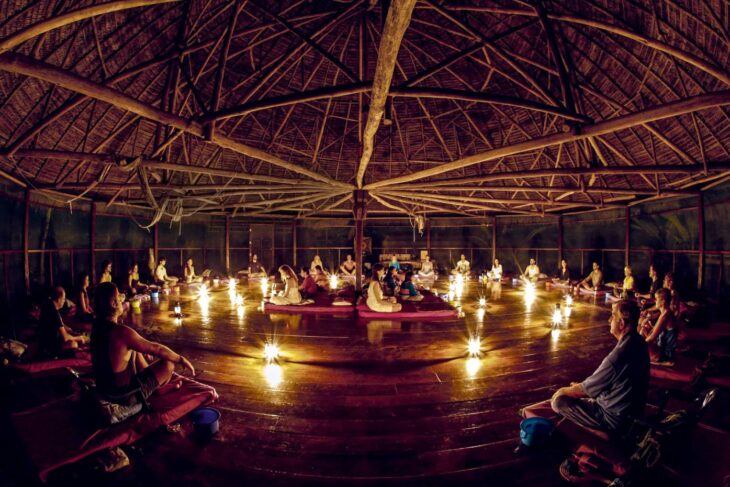
Source: How To Spend It – Financial Times
What is ayahuasca, and how is it used? How does it work? Is it true that it causes hallucinations? How dangerous can it be for health?
Ayahuasca is a brew made of two plants – the ayahuasca liana itself and chacruna leaves. Each family may follow its own traditions and recipes when preparing the brew. Generally, shamans may use from 5 to 20 different plants to prepare the brew. Ayahuasca may cause only vomiting, and it will bring no effect without chacruna leaves. Some shamans use pure ayahuasca.
However, whatever you might read and no matter how much your friends might tell you about their experiences, these are just words. No videos, books, or stories will give you at least 5% of the authentic experience. Perhaps, this is one of those mysterious things in the world that has no explanation, and all the stories about it are just a poor attempt to convey the experience of others or to share pallid chemical formulas.
You need to understand that for shamans, ayahuasca is a spirit, a living substance at the bottom of your glass, which is safe if you follow some rules, including a monthly diet. Peruvians call ayahuasca a medicine, and they consider it to be a medication rather than a hallucinogenic brew. Its effects vary depending on the person. They can be either hallucinations or a complete lack of effect during the first ceremonies. It is impossible to predict how it will work.
How long the retreat last? What procedures did you undergo? Where did you live? How many other participants were staying with you?
Usually, the first complete retreat should last from 10 to 14 days, but you should remember that the first three days of ceremonies are dedicated to cleansing the body, and the work on your issue begins only after that. The procedures depend on the center you are staying at.
The center we are working with now has many different procedures along with ayahuasca ceremonies. These include showing with flowers, steam bathing with herbs, a rapé ceremony for cleansing the nose and throat, and much more. And, of course, there are also diets with special plants selected by a shaman for each person. This is the most important part that the shaman does for you – he connects you with the spirit of your plant.
During the entire stay in the center, you should lead an ascetic, secluded lifestyle. There are other participants in the center, but they will not bother you because everyone lives in their own houses. We call them taboos here. This is also an important part of the diet. The center where I am currently working is located in the mountains neighboring the city of Tingo Maria, and on weekends, we arrange excursions for everyone. This picturesque place is surrounded by beautiful caves, mountains, and waterfalls. The number of participants usually depends on the season, varying from 5 to 20 people.
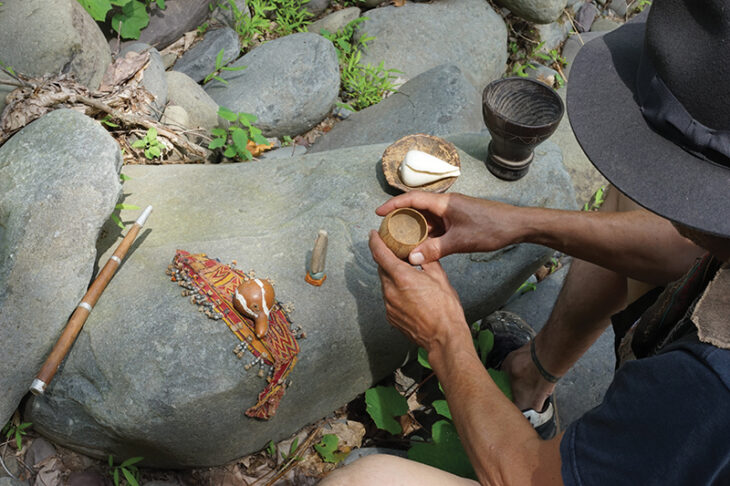
Source: Upstater
Did you manage to achieve the desired result?
Each experience is unique. As a guide, I’ve seen different experiences, and I’m happy to witness how people are healed. Moreover, it is pleasant to hear heartfelt thanks over some time, when a person has already managed to realize himself. As for my personal experience — yes, I can undoubtedly say that the Amazonian healing techniques have opened the door to a new world for me and helped me to get rid of many fears and problems.
Here, I found myself found my life’s work. Amazonian Medicine taught me how to work with our plants. So now, after returning home, I learn lots of information about our plans to restore the lost knowledge of our ancestors. After all, they did not have any drugs but used herbs and other plants to treat diseases, just like Shipibo shamans do.
Does this kind of Medicine have many opponents? Why are many people prejudiced against it?
Ayahuasca is illegal in most countries of the world. It is considered to be a narcotic substance. For this reason, this kind of Medicine has enough opponents. But you should understand that different nations and cultures have used ayahuasca for thousands of years. In Peru, Ayahuasca is recognized as the country’s cultural heritage. The culture of Peruvian shamans is very different from ours.
It is essential to understand that to gain knowledge of something. You should gain them yourself. Each person chooses what to believe in and what is true. People who come to Peru for such retreats do that — they get their own experience in places where ayahuasca has been used for a very long time. And only after getting such an experience, a person can decide on whether ayahuasca is a drug or Medicine.
